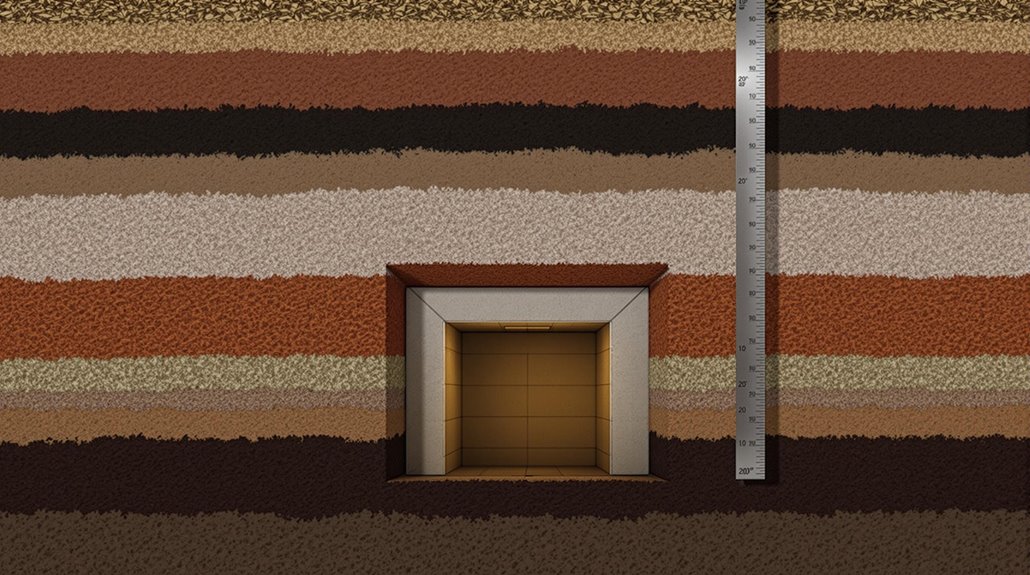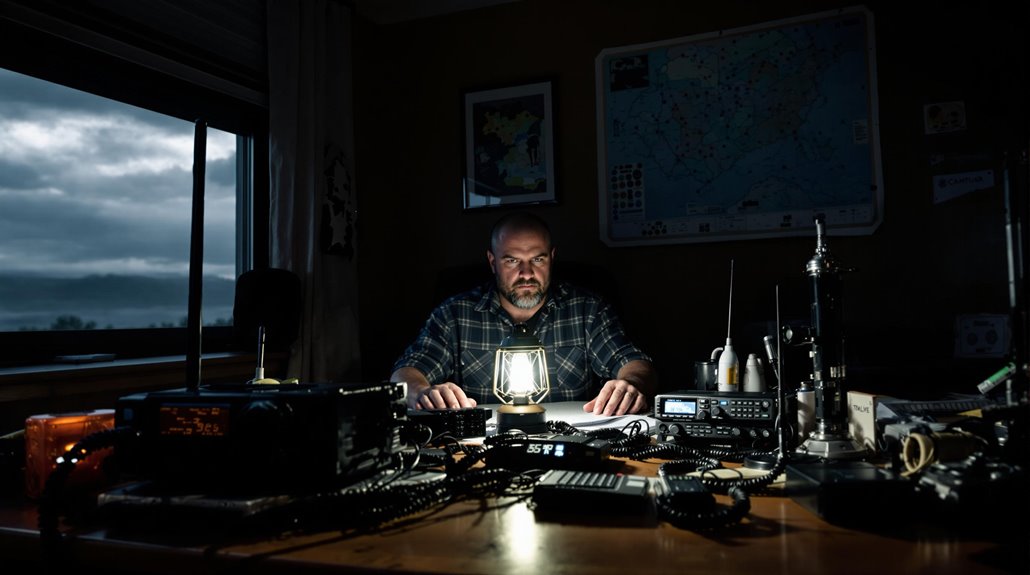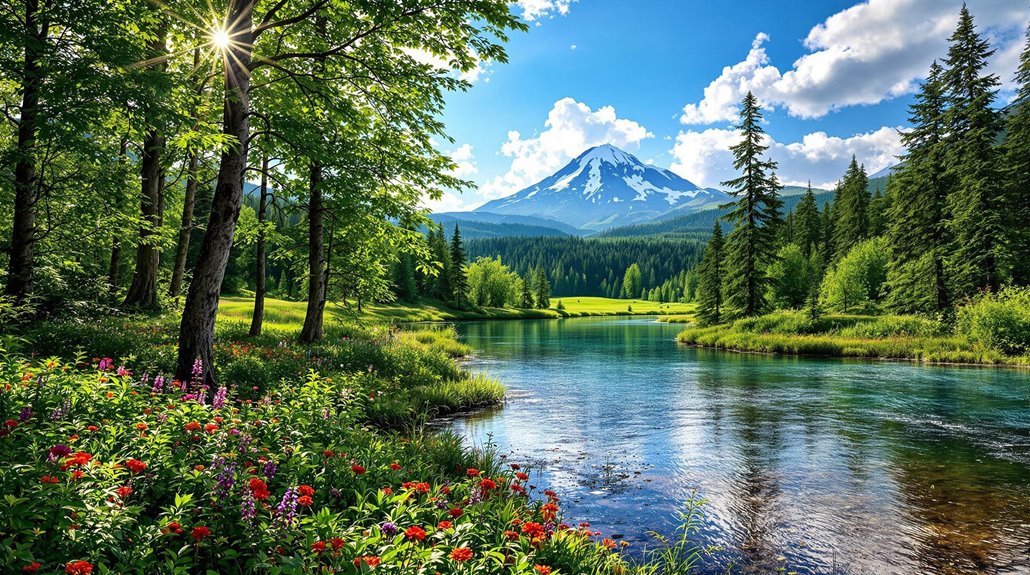How Many Miles From a Nuclear Blast Do You Need to Be to Be Safe?
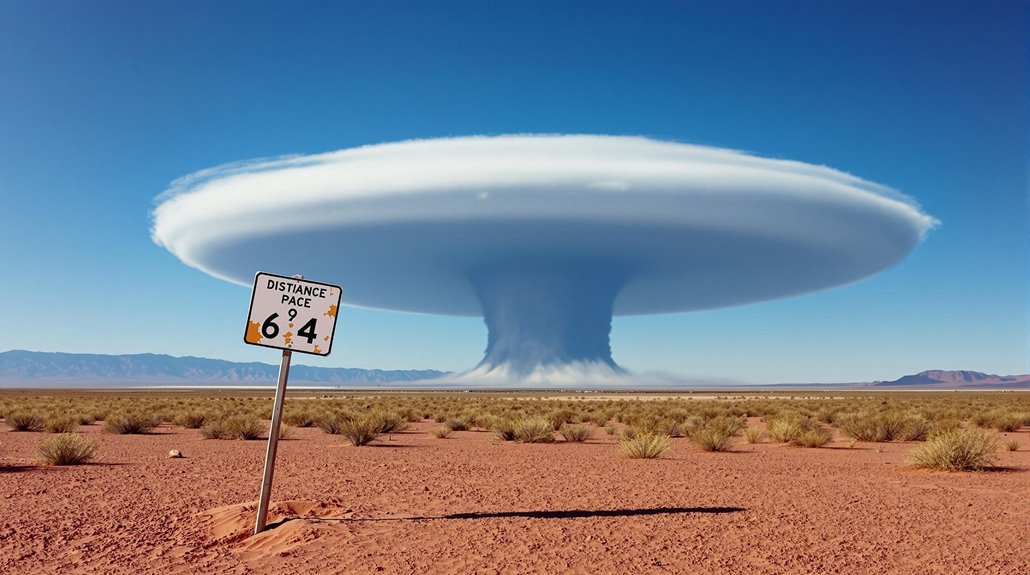
You'll need to be at least 53 miles away from ground zero to avoid immediate life-threatening effects of a nuclear blast. However, your exact safe distance depends on the weapon's yield, weather conditions, and terrain. Within 2.5 miles, survival is unlikely, while areas up to 6.8 miles face severe radiation risks. Even at greater distances, you'll need proper shelter and protection strategies to guarantee your safety in both short and long-term scenarios.
Understanding Nuclear Blast Zones and Radius Effects
Three distinct zones emerge when studying the forceful impact of a nuclear blast. In the innermost zone, extending 2.5 miles from a 750-kiloton nuclear detonation, you'll face almost certain obliteration as the blast wave decimates everything in its path. Beyond this radius, you'll find a secondary zone where your survival depends heavily on immediate shelter within reinforced concrete structures designed to withstand the intense pressure.
The outer zone, while safer from immediate blast effects, still poses significant risks from nuclear fallout and radiation exposure. You'll need to remain sheltered for at least 72 hours when radiation levels are most dangerous. Research using fluid mechanics has helped scientists understand how blast waves interact with buildings, leading to improved protective structures that could increase your chances of survival at various distances from ground zero.
Above-ground bomb shelters with proper ventilation systems can provide essential protection against nuclear fallout in the outer blast zone.
Critical Factors That Determine Safe Distance
Several critical factors determine the safe distance you need from a nuclear blast, including the weapon's yield, detonation height, weather conditions, and surrounding terrain. To survive the blast, you'll need to be far enough away from both the initial fireball and subsequent effects.
- A ground level explosion creates more fallout but affects a smaller radius compared to an air burst detonation
- Weather patterns, particularly wind direction and speed, can carry radiation and fallout for hundreds of miles away
- Natural barriers like mountains or valleys can either amplify or reduce the blast effects
The explosion's yield is measured in kilotons or megatons, with larger weapons requiring greater safe distances. For a 1-megaton nuclear blast, you should be at least 7 miles away to avoid severe damage, though fallout risks can extend much further. The electromagnetic pulse effects from a nuclear detonation can damage electronic equipment up to 900 miles away.
Immediate Survival Actions Based on Your Location
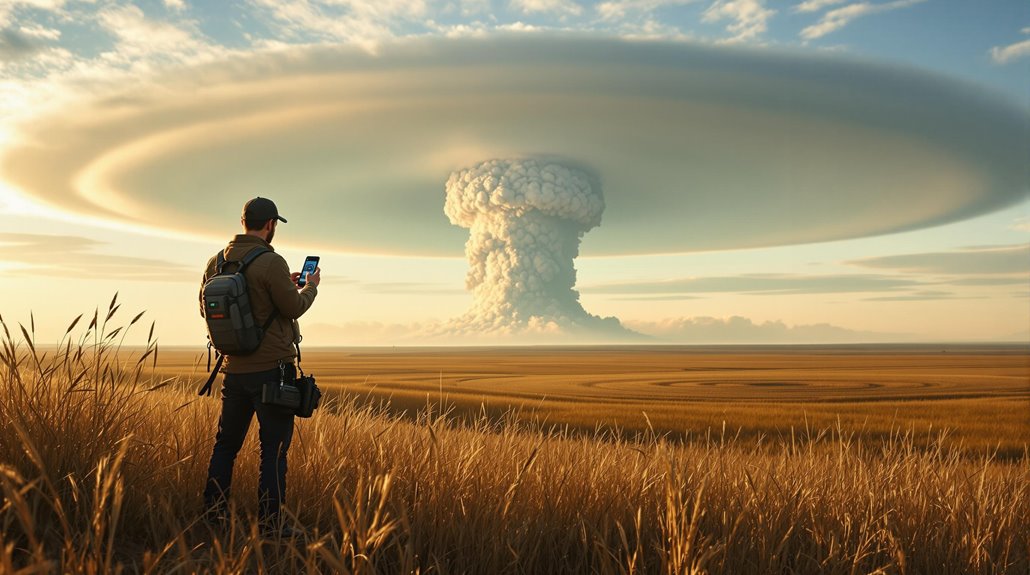
When you first detect signs of a nuclear blast or receive an emergency alert, your immediate actions should depend on where you're located at that moment. If you're outdoors and see a blinding light, quickly find the nearest sturdy building or underground shelter within seconds. For those already indoors but within a few miles away from the blast, move to the basement or center of the building, away from windows and doors.
Your immediate survival depends on how fast you take cover. If you're in a vehicle, drive perpendicular to the wind direction if possible, or abandon the car and seek shelter in a nearby building. Don't try to outrun the blast - instead, focus on finding adequate protection from radiation, heat, and pressure waves to survive the initial impact. Similar to tornado safe rooms, having a designated shelter area in your home can significantly increase your chances of survival during catastrophic events.
Building Types and Materials for Maximum Protection
Protection from a nuclear blast hinges on the strength and composition of your shelter's construction. Reinforced concrete structures designed for seismic safety provide your best chance of survival against blast effects and radiation. You'll want to seek windowless rooms in the center of buildings, as they offer superior protection from both initial and residual radiation exposure.
- Reinforced concrete structures with thick walls greatly outperform light frame constructions like log cabins
- Interior rooms away from exterior walls provide maximum shielding from radiation and blast waves
- Building materials such as heavy concrete and steel offer vastly better protection than wood or standard materials
Your survival chances increase dramatically based on your shelter's construction quality, distance from the blast, and your specific location within the building. Avoid structures with minimal protective building materials, as they won't withstand the intense pressures of a nuclear explosion. Fibre-reinforced plastic shells provide exceptional strength and durability for reinforced residential bunkers that can withstand severe impacts.
Radiation Exposure Risks at Different Distances
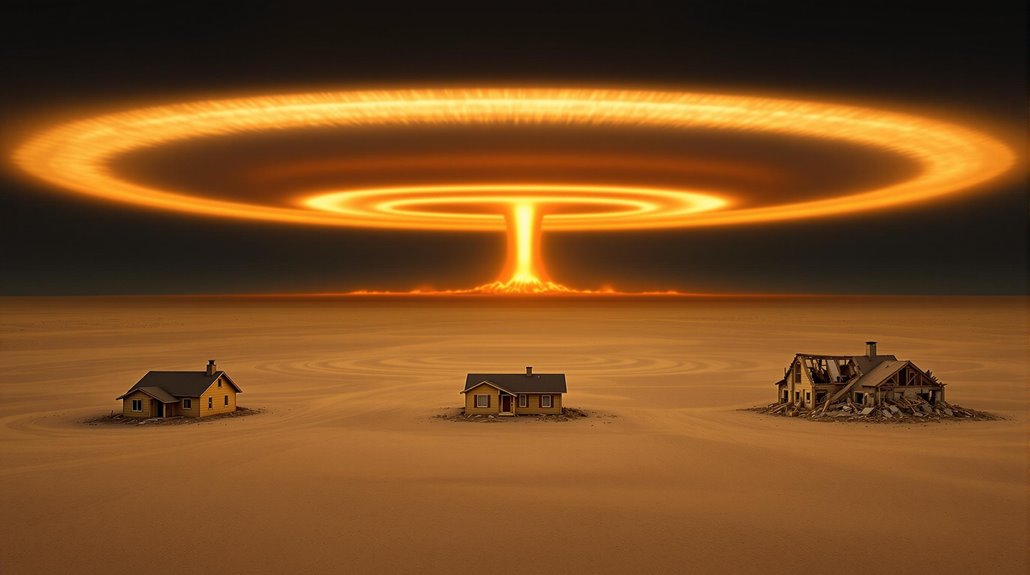
The devastating effects of a nuclear blast extend far beyond the immediate impact zone, creating deadly risks at various distances. When you're within 6 miles of a nuclear explosion, you'll face crushing forces and lethal winds comparable to those experienced during the Hiroshima explosion. Even at greater distances, you're not completely safe from the dangers of nuclear bombs.
While you might survive the initial blast beyond 6.8 miles, you'll still face serious radiation exposure risks. Nuclear fallout can travel extensive distances, affecting areas far from ground zero. During nuclear war scenarios, you could experience flash blindness up to 53 miles away on a clear night. Your survival chances improve greatly beyond the 6-mile radius, but you'll need immediate medical attention if exposed to radiation, as the long-term health effects can be severe.
Essential Supplies and Equipment for Nuclear Survival
Surviving a nuclear blast requires specific equipment and supplies that you'll need to gather well before disaster strikes. Your survival kit should include protective gear like thick shoes, gloves, and goggles to shield you from radioactive particles. You'll also need a reliable Geiger counter to detect radiation levels when ascertaining if it's safe to leave your shelter.
- Keep potassium iodide or iodine tablets readily available to protect your thyroid gland from radiation exposure
- Stock up on emergency food, water, and a battery-powered radio for essential communications
- Maintain a thorough first aid kit with antibiotics and radiation sickness treatments
Your shelter should have thick concrete walls and minimal windows to protect against nuclear explosions. Remember to keep your vehicle's gas tank full, as evacuation might become necessary without warning.
Long-term Health Considerations Beyond the Blast Zone
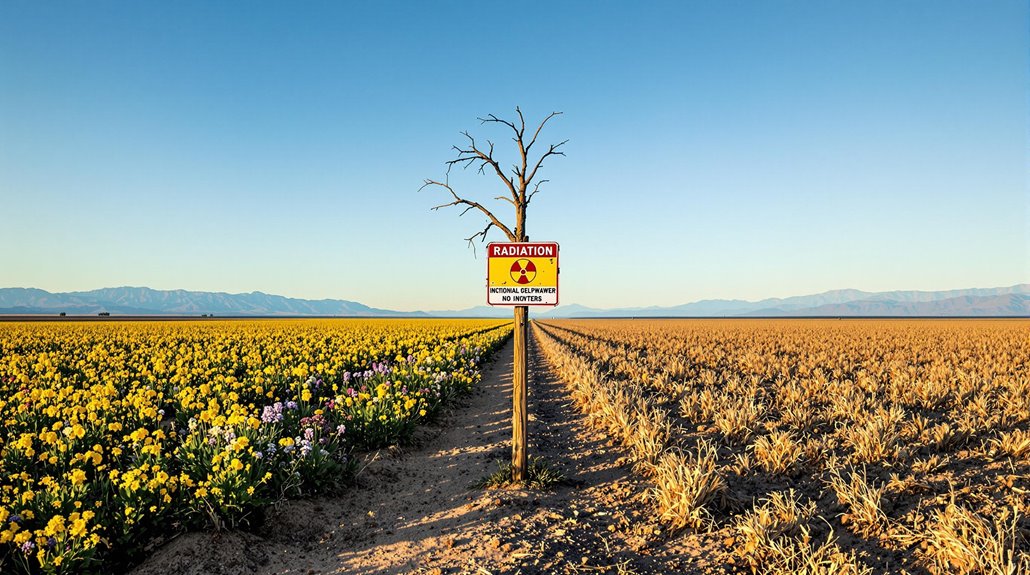
Many devastating health effects can persist long after a nuclear explosion, even for those who survive outside the immediate blast zone. Studies of Hiroshima and Nagasaki survivors show that radiation exposure can trigger various cancers and genetic mutations decades after the initial blast. You'll face risks from radioactive fallout that contaminates food and water supplies in surrounding areas, leading to ongoing health complications.
A recent study indicates that the destruction of medical facilities and infrastructure can severely limit your access to necessary treatments. You'll need to be concerned about both immediate and long-term health effects, as radiation can damage your cells and DNA, potentially affecting future generations. The psychological impact of surviving a nuclear blast can also cause lasting trauma, affecting your mental well-being for years to come.

